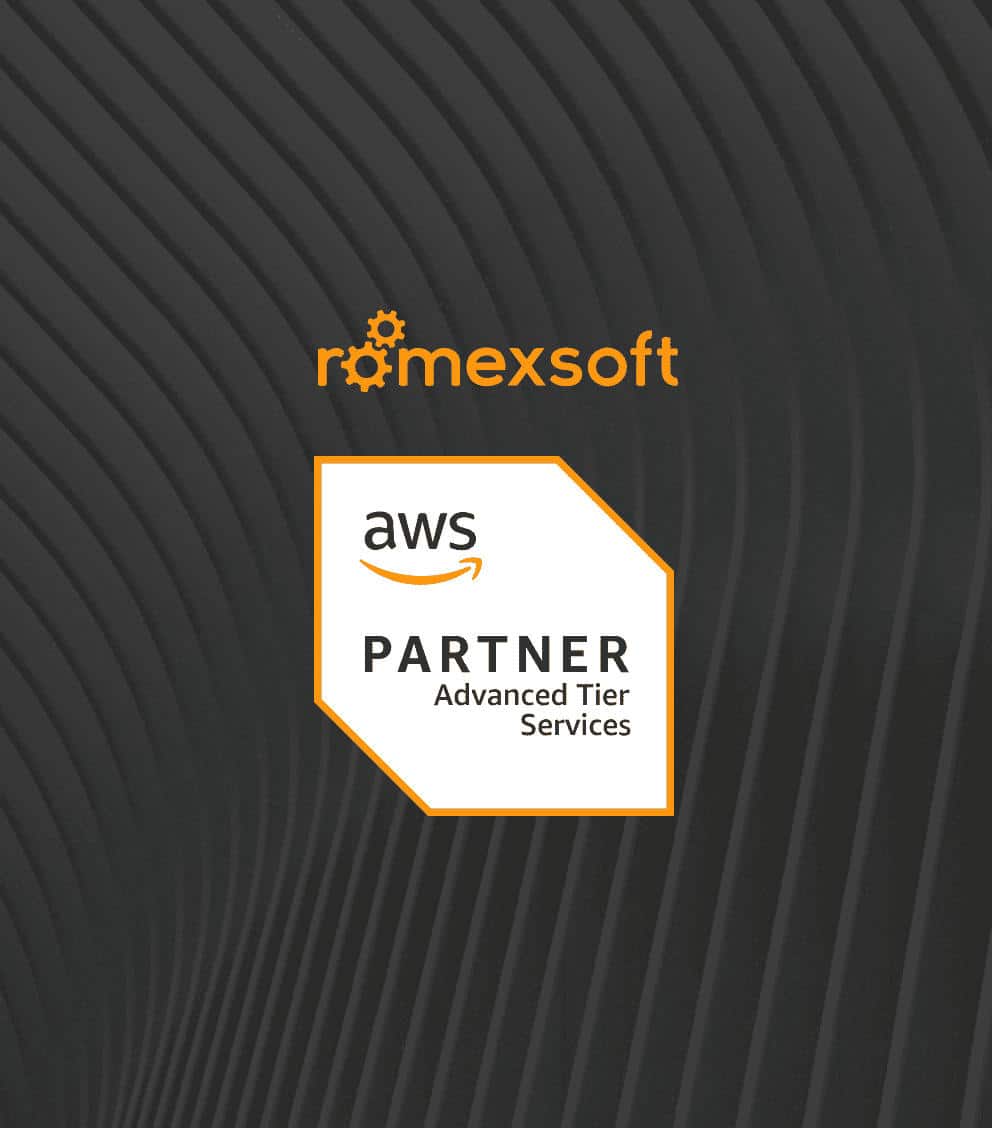EMR/EHR Development. What You Need to Know
Planning to introduce an EMR/EHR system at your facility? In this guide, you’ll learn about how to choose, develop and easily adopt the right kind of software. The key facts you should consider before adopting the EMR/EHR software:
- Benefits of EMR/EHR system
- Security compliance standards for EMR/EHR development
- Protocols for EMR/EHR development
- Benefits of EHR software for medical personnel
- Benefits of EHR software for patients
- Tips for better EMR Adoption

Table of Contents
The medical industry is becoming more digitized with each passing day. Considering the recent federal government initiative offering over $4.4 billion in EHR Incentive Program payments (with 76.000 probable eligible providers, including you), there isn’t much holding your facility back from adopting an EHR/EMR system.
Except for the fact that you don’t know where to begin from, right?
But the things you do know are that you want to:
- Minimise the hassle of storing and organizing patient notes
- Make the databases accessible to search through
- Seamlessly integrate a reliable billing service
Basically, a system to eliminate unnecessary paperwork and take some workload off of your doctors. Fortunately, that is exactly what a custom EMR/EHR system can offer your facility.
Get to know all the essential details from our guide.
Table of Contents
Advantages of Using an EMR and EHR Systems For Healthcare Organization
Before commissioning any EHR development, you need to compose a clear outline of tasks the system needs to be capable of tackling. Consider consulting with your staff. Talk over the time-consuming and daunting tasks they have to perform on a day-to-day basis and what kind of functionality they would likely be using in a custom EHR system.
Our EHR software company has comprised the following list of tangible benefits:
From the viewpoint of medical personnel:
- Seamless data transfer between departments
- Loads of physical space saved by digitizing the medical records
- More efficient patient workflow with an increased capacity of patients served per day and overall increased productivity
- Reduced operational expenses such as medical transcription services and overtime labor
- Significant reduction of medical errors and improved results in patient management
- Advanced e-prescribing of medicine and medical record-keeping capabilities
Most healthcare providers who have already adopted EHR systems have reported general enhancement in their practices, along with improved efficiency of patient billing processes.
From the patient’s’ viewpoint:
- Overall enhanced diagnosis and treatment
- Reduced number of errors in personal healthcare records
- Faster decision making and treatment assignment from medical professionals
The bottom line is: EHR software creates a secure, collaborative environment for managing sensitive patient data. The registered reduction of errors in personal healthcare records benefits both the patients and the personnel, especially when it comes to hand transcribed errors and misplaced patient files. Digital solutions allow you to keep all data well organized and within quick reach.
In addition, EHR and EMR systems allow for advanced personal data security as such software can easily place constraints upon different users’ access to particular patient information.
When approaching the key stakeholders and end-users with an Electronic Health Records development project, do an outline of the benefits mentioned above to ensure higher adoption rate from day one.
EMR Software Development: How To Get It Right
Implementing an EMR system in your organization is a long and strenuous process. How can you ensure that your transition goes smoothly and your staff won’t spend the following months strangled in a new weird routine?
Here are the essential steps you should take at the beginning of an EMR web development process.
Consult With Your Doctors
Partake in collaborative development if you want to ensure easy adoption by your staff. Before you fully commit to the development, secure a buy-in from your medical personnel.
Solicit their feedback on what kind of features they want in an EMR. Survey them on how they plan to use the system and what’s most important to them. This way you can reduce the cost of EMR system development by narrowing down to an exact list of custom features. Your doctors will gladly get on board once the development is complete, as they’ll receive the exact product they’ve requested for.
Create a Detailed Brief
Once everyone has had their say on the software and the key decision-makers vetted the final list of features, put everything down in detail before approaching an EMR software development company.
We expect our clients to have a detailed brief outlining different software modules and clear product expectations. Proceeding from there, we’ll help you settle on such key details as:
Choosing The Most Appropriate Standard and Protocol:
Our EMR development company has extensive experience and knowledge in dealing with the following standards:
- HCPC
- CPT
- ICD-9/ICD-10
We build modern solutions in compliance with the industry’s latest regulations and provide seamless integration with various external systems and services, including hardware integrations.
Opt for Highly-Customizable Software
Choose an EMR system that perfectly fits your specialty, or can be easily customized based on your current needs. After all, the more custom your EMR system is – the more time it will save in the long run.
EHR/EMR Standards and Protocols in EMR Development
When embarking on the journey of EHR software development, understanding the key standards and protocols is crucial. These standards ensure interoperability, data integrity, and security in the system. Here’s a closer look at some of these standards…
Health Level Seven (HL7)
HL7 is a set of international standards for the transfer of clinical and administrative data between software applications used by various healthcare providers. In the context of EMR development, HL7 standards facilitate the seamless exchange of information between different systems, enhancing the efficiency and effectiveness of healthcare delivery.
Fast Healthcare Interoperability Resources (FHIR)
FHIR is a standard for exchanging healthcare information electronically. It has gained popularity in recent years due to its ease of implementation and adaptability. FHIR is particularly useful in EHR development as it supports RESTful architectures, making it easier to search for and retrieve healthcare records.
International Classification of Diseases (ICD-10)
ICD-10 is a medical classification list by the World Health Organization (WHO). It codes for diseases, signs and symptoms, abnormal findings, and external causes of injuries or diseases. In EHR software development, ICD-10 codes are used to standardize the representation of diagnoses and procedures, ensuring consistency across different healthcare providers and systems.
Step-by-Step Guide to Implementing Standards in EHR Development:
- Step 1: Identify the standards relevant to your healthcare organization’s needs. This could include HL7, FHIR, ICD-10, among others.
- Step 2: Incorporate these standards into your EHR development plan. This should be done in consultation with your software development team.
- Step 3: Train your staff on the importance of these standards and how they are implemented in your system.
- Step 4: Regularly review and update your system to ensure compliance with these standards as they evolve.
Security and Compliance in EHR/EMR Development
Security and compliance are paramount in EHR software development. Protecting patient data is not just a matter of trust, but it’s also a legal requirement. Here’s an overview of key considerations in ensuring security and compliance in EMR development:
Security compliance in EHR/EMR Development
HIPAA Compliance
The Health Insurance Portability and Accountability Act (HIPAA) sets the standard for protecting sensitive patient data in the United States. Any organization dealing with protected health information (PHI) must ensure that all the required physical, network, and process security measures are in place and followed. In the context of EHR development, HIPAA compliance is a must-have. It ensures that patient data is stored and transmitted in a way that minimizes the risk of breaches.
Data Encryption
Data encryption is a critical aspect of EMR development. It involves converting data into a code to prevent unauthorized access. Both data at rest (stored data) and data in transit (data being transmitted over a network) should be encrypted. This ensures that even if a breach occurs, the data obtained will be unreadable and useless to the attacker.
Regular Security Audits
Regular security audits are a crucial part of maintaining a secure EHR system. These audits can identify potential vulnerabilities and ensure that all security measures are working as intended. They should be conducted by independent third-party auditors for objectivity.
Cost and Time Estimation in EHR/EMR Development
Estimating the cost and time for EHR software development is a complex task that depends on various factors, including the scope of the project, the features required, the complexity of the system, and the resources available. Here’s a general overview of what to consider:
Scope of the Project
The scope of the project is a major determinant of both the cost and time required for EHR development. A system with a wide range of features and functionalities will naturally take more time and resources to develop than a basic system. It’s essential to clearly define the scope of the project at the outset to get an accurate estimate.
Features Required
The specific features required in the EHR system will significantly impact the cost and time estimates. Advanced features like AI-based predictive analytics, telemedicine capabilities, and complex integrations with other systems will increase the development time and cost.
Complexity of the System
The complexity of the system also plays a significant role in the cost and time estimation. A system that needs to handle large volumes of data, ensure high levels of security, and comply with various regulations will be more complex and thus require more resources to develop.
Resources Available
The resources available for the project, including the development team’s size and expertise, will also affect the cost and time required. A larger, more experienced team can develop the system more quickly, but this could also increase the cost.
Essential Features EMR Software Should Have
1. Smooth Interface and Systems Integration:
Robust integration features are the key aspect of any electronic medical records solution. It is accomplished via different interfaces that transfer data between systems – both in real time and on demand.
You should consider these two common points of integration:
- HIS (Hospital Information System), if your practice is a part of a larger institutional network.
- Billing service and records-keeping system.
The latter is essential for improving customer service and efficiency of your front desk staff. Billing service integration reduces payment delays, commonly caused by coding errors. Reimbursements, too, are processed at a faster pace.
This feature will drastically reduce the amount of time required to enter patient information during each billing instance. Once all of the patient files have been added into the system, the data could be automatically managed or sent to a 3rd party billing service. As a result, more time could be devoted to patient care, instead of being spent on bureaucracy.
2. Charting

“I love filling out charts”, – said no doctor ever. As physician Edwin Leap noted in a recent interview: “Doctors stay after their shifts, or chart from home, or come in on their days off in order to complete their documentation. Needless to say, this is unlikely to create the best possible chart. Not only is this true, I have watched as nurses sat for one to two hours after their busy ED shifts, catching up on the ever increasing documentation requirements in their EMR systems.”
Reduce the stress and hassle involved with creating and managing charts by spicing up your EMR software with the next features:
- Customizable chart templates to suit your practice needs.
- Voice recognition and dictation functionality.
- Optimize charts for portable devices e.g. tablets.
- Consider investing in machine learning, so that the software will learn the standard information, which generally goes into the record and streamline the whole process more effectively with auto-filling and prompts.
3. Medication Tracking and E-prescriptions
Your EMR solution should easily track all the patient prescribed medication and have the information at your disposal any given time. Additionally, you may consider adding extra functionality to determine how the prescribed medication interacts with other drugs being currently taken by the patient, such as: issue incompliance alerts, potential allergic reactions or possible side effects. In the latter case, it could suggest some alternative treatment options.
Say goodbye to indistinguishable handwriting! Your doctors should be able to create quick prescription printouts using your EMR software or send the order directly to the patient’s pharmacy of choice. Your EMR system should also have a secure portal for e-prescription of controlled substances in compliance with the State or Federal requirements.
4. Integration with Lab
Just like e-prescribing, your staff will definitely appreciate the electronic tracking of sample delivery, as well as the ability to review and analyze the results, while seamlessly integrating that data with charts.
Consider developing an EMR solution that can easily integrate with the standard lab software: capable of having a two-way communication channel with the labs, offering quick access to all the supporting information and research.
5. Appointment Reminders
Improve communication standards by integrating an efficient reminder system into your EMR. It should be able to send notifications via email or text to remind of the upcoming appointments. You may choose to integrate your EMR with each doctor’s calendar and send a series of direct messages to the patient based on your customised time settings. For example, you can send out reminders 3 days in advance, and later 24 hours before the scheduled appointments. Automating this routine will not only save your operational staff a lot of time, but also reduce the amount of missed appointments – a huge source of frustration for doctors.
6. Evaluation and Management Coding
You can power-up your EMR software with features that will help comply with the nationwide Evaluation and Management Documentation Standards, significantly reducing manual labor required. Your custom EMR record-keeping system can help you comply with the next requirements:
- Complete and legible medical records
- Relevant patient history and reasons for the encounter.
- Prior diagnostic test results
- Physical exam findings
- Medical plan of rate
- Date and identity of the observer
- Health risk factors if any.
- Diagnosis and treatment codes.
- Patient progress and response to and changes in treatment.
7. A Dedicated Patient Portal
A patient serving themselves is the ultimate healthcare provider dream. That’s the task you can easily accomplish by integrating a dedicated patient portal to your EMR system. A great patient portal should offer access to the following data:
- Recent visits
- Comprehensive discharge summaries.
- Medication and prescriptions.
- Immunization
- Allergies
- Recent lab tests and results.
Additionally, you may consider adding the following handy features:
- Request or refill prescriptions.
- Internal messaging with the healthcare providers.
- Scheduling of non-urgent appointments.
- Update of contact information and address.
- Conduct payments
- Download and complete requested forms.
- Check benefits and coverage.
- Access educational material.
A pleasing, user-friendly patient portal will be gladly adopted both by your staff and the patients themselves, as proven by recent results.
8. Cloud Hosting
Cloud technologies are quickly pushing over the on-premise software, especially as the portable devices become more common at healthcare facilities. Your doctors will appreciate the ability to access healthcare records from any location and device if you opt for the cloud-based EMR software.
Our development company will make sure all the data is safe and sound by protecting it with the latest encryption technologies. Besides, the cost to implement, maintain and update cloud software is often lower compared to on-premises apps.
Tips for better EMR Adoption
Commissioning to develop your EMR software is a major part of the deal. Yet, the next important step is to make sure your medical team is ready to start using it. Here are the essential tips for get that process kicking:
Phase In Hardware Ahead of Software
Learning how to use new software can be challenging. Now imagine doing so without knowing how to use the computer. Yes, there are still some old school doctors out there, who feel more comfortable with pen and paper. Those peeps might be on your team, too.
Schedule some basic training for doctors and other personnel a few months in advance to make sure everyone is familiar with such basics as opening files, connecting to wireless networks and so on. This will significantly boost the learning curve for the new technology adoption later on.
Create a Dedicated Team To Transfer All The Records
When the adoption process would be in process, you may consider making one person responsible for entering the existing patient data with another person responsible for triple-checking the added data for accuracy. Also, it is essential to have a permanent team for scanning the existing documents during the creation of the initial records.
Adopt a Systematic Approach to Scanning and Phasing your EMR in Use
Most healthcare providers set the date when they will start using EMR with the active patient files. It means that after this day, new data will be entered into the EMR as the patients arrive.
Your phase-in process may include settling a routine to identify which documents have already been scanned, and which ones are new. The easiest way to do so is to put a black cross on the back of the scanned sheet before putting it back into a patient record. This will help you avoid duplicate files for sure.
Get the Patients Involved in the Switch
Obviously, your patients will be delighted to hear that the doctors are going to have more free time to dedicate to them. Also, they’ll be happy to hear that an EMR system can help you deliver better care. That’s a great marketing move for sure!
However, you should plan ahead of how an EMR will impact doctor-patient relationships. Will they need to turn their back on the patient while inputting data to the EMR? How will you handle the situation? Test various approaches and strategies with patient consent to map out the best behavioral patterns.
EHR and EMR systems should be optimized for a long life cycle and facilitate longitudinal care delivery. All the clinical documentation stored in these systems should comply with the following essential rule: “Write once, reuse many times”.
The process of adopting new medical software may seem lengthy and complicated at the beginning. Yet, keep your focus on the end-goal – increased productivity, efficiency and overall better care, and don’t forget to remind your medical staff about them.
If you are interested in custom EMR or EHR software development, request a custom quote from Romexsoft today!
EMR/EHR development FAQ
Emerging trends in EMR and EHR development include the use of artificial intelligence (AI) and machine learning to analyze patient data and predict health outcomes, the integration of telemedicine capabilities for remote patient care, and the development of mobile-friendly platforms for easier access to patient records. These trends are shaping the future of healthcare and can significantly enhance the functionality of EMR and EHR systems.
Successful adoption of a new EHR system requires a comprehensive training program that familiarizes staff with the system's features and functionalities. It's also beneficial to have a dedicated support team to assist with any technical issues that arise during the transition. Additionally, involving staff in the EHR development process can increase buy-in and ensure the system meets their needs.
Some common challenges during EHR software development include ensuring data security and privacy, integrating the new system with existing software and hardware, and customizing the system to meet the specific needs of the healthcare organization. These challenges can be mitigated through careful planning, thorough testing, and ongoing communication with the development team.
EHR development supports patient-centered care by facilitating easy access to patient records, improving communication between healthcare providers, and enabling the integration of patient feedback into care plans. Additionally, features such as patient portals allow patients to actively participate in their care by providing access to their health records, appointment scheduling, and communication with healthcare providers.





